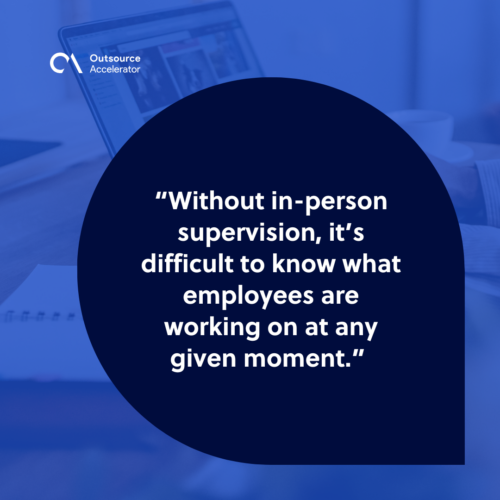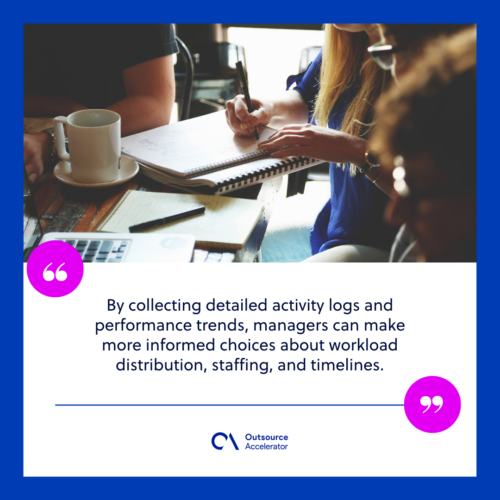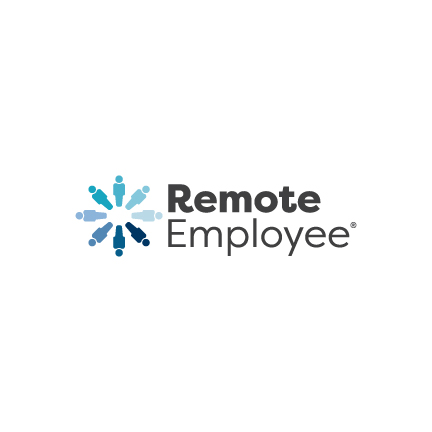6 Ways remote employee tracking software builds efficient virtual staff
6 Crucial benefits of remote employee tracking software
As businesses expand, the appeal of hiring remote workers has surged. According to HR Stacks, in 2024, approximately 40% of the global workforce engaged in some form of remote work, a significant rise from 15% in 2019.
This shift is driven by the flexibility remote work has, allowing companies to tap into a broader talent pool and reduce overhead costs. However, managing a dispersed staff presents challenges.
To address the issues, many organizations are turning to remote employee tracking software, as these tools provide managers with insights into employee activities. These tech innovations help to monitor performance and foster accountability in a virtual environment.
Let’s discuss how leveraging such software can help businesses effectively manage remote employees and sustain their growth in an increasingly digital world.
5 Primary challenges of managing a remote workforce
Hiring remote talent gives companies access to skilled professionals from around the world.
Remote Employee CEO Ruffy Galang says “With many workers already embracing working from home and a significant portion being highly educated professionals, it’s clear that this flexible, efficient way of working is here to stay.”
However, the lack of visibility into daily operations can create serious hurdles for managers.
When teams are spread out, staying informed and in control becomes more difficult. Here are five challenges tied to limited oversight:
1. Limited visibility into daily work
Without in-person supervision, it’s difficult to know what employees are working on at any given moment. Managers may struggle to stay informed about task progress, deadlines, or unexpected roadblocks, leading to misalignment and delays.

2. Difficulty tracking productivity
In a remote setup, traditional productivity cues like observing work habits or time spent on tasks aren’t available.
This can make it hard to identify disengaged team members or those needing support, resulting in uneven performance across the team.
3. Inconsistent communication flow
When monitoring is minimal, important updates or status checks often get missed, particularly for those in separate time zones. Conversations may be scattered across platforms or delayed altogether, causing confusion and making it tough to maintain a steady workflow.
4. Disconnected team engagement
Lack of oversight can also mean missed opportunities to spot disengagement or low morale.
Without regular check-ins or performance reviews, employees may feel neglected, affecting their motivation and connection to the team.
5. No real-time insight for managers
When leaders lack access to real-time data or activity tracking, decisions are based on guesswork. It can affect everything from resource planning to project timelines, ultimately impacting performance and accountability.
This is why utilizing remote employee tracking software becomes not just helpful but essential for managing teams with clarity and confidence.
6 Benefits of remote employee tracking software in managing virtual staff
Remote employee tracking software helps simplify management and gives leaders the tools to support their staff effectively.
Here’s how it makes a real difference:
1. Improved productivity insights
With tracking tools, managers get a clear view of how time is spent during work hours. This makes it easier to identify patterns, spot bottlenecks, and support members in staying focused on their priorities.
2. Better project management
Many tracking platforms integrate with project management tools, offering a centralized view of tasks, deadlines, and progress.
These tools help reduce confusion and keep everyone aligned with the organization’s goals.
3. Clearer accountability
Remote work requires trust, but having visibility into who’s doing what adds a level of structure. Tracking software helps create a culture where everyone understands their responsibilities and can be recognized for their contributions.
4. Data-driven decision making
By collecting detailed activity logs and performance trends, managers can make more informed choices about workload distribution, staffing, and timelines. This leads to better planning and fewer surprises.

5. Flexible work without losing oversight
Tracking tools allow employees to work on their own schedules while still giving managers the visibility they need. It supports a results-driven environment without requiring constant check-ins.
6. Easier compliance and reporting
For businesses that need to meet specific industry standards or client reporting requirements, having a digital record of hours worked and tasks completed can be extremely useful. It simplifies audits and contract billing.
Remote employee tracking software isn’t about micromanaging—it’s about gaining clarity and giving remote staff the structure they need to succeed from anywhere.
Work with a reliable virtual staff through Remote Employee
Hiring dependable remote workers starts with the right support. With Remote Employee, you gain access to skilled professionals backed by tools and systems that make collaboration simple and effective.
Focus on growth while Remote Employee helps manage the details that keep your virtual employees running smoothly. Whether you’re scaling up or just getting started, it’s time to experience the difference of working with a partner that understands remote success.
Book a consultation with Remote Employee today and discover what your workforce can achieve!







 Independent
Independent




